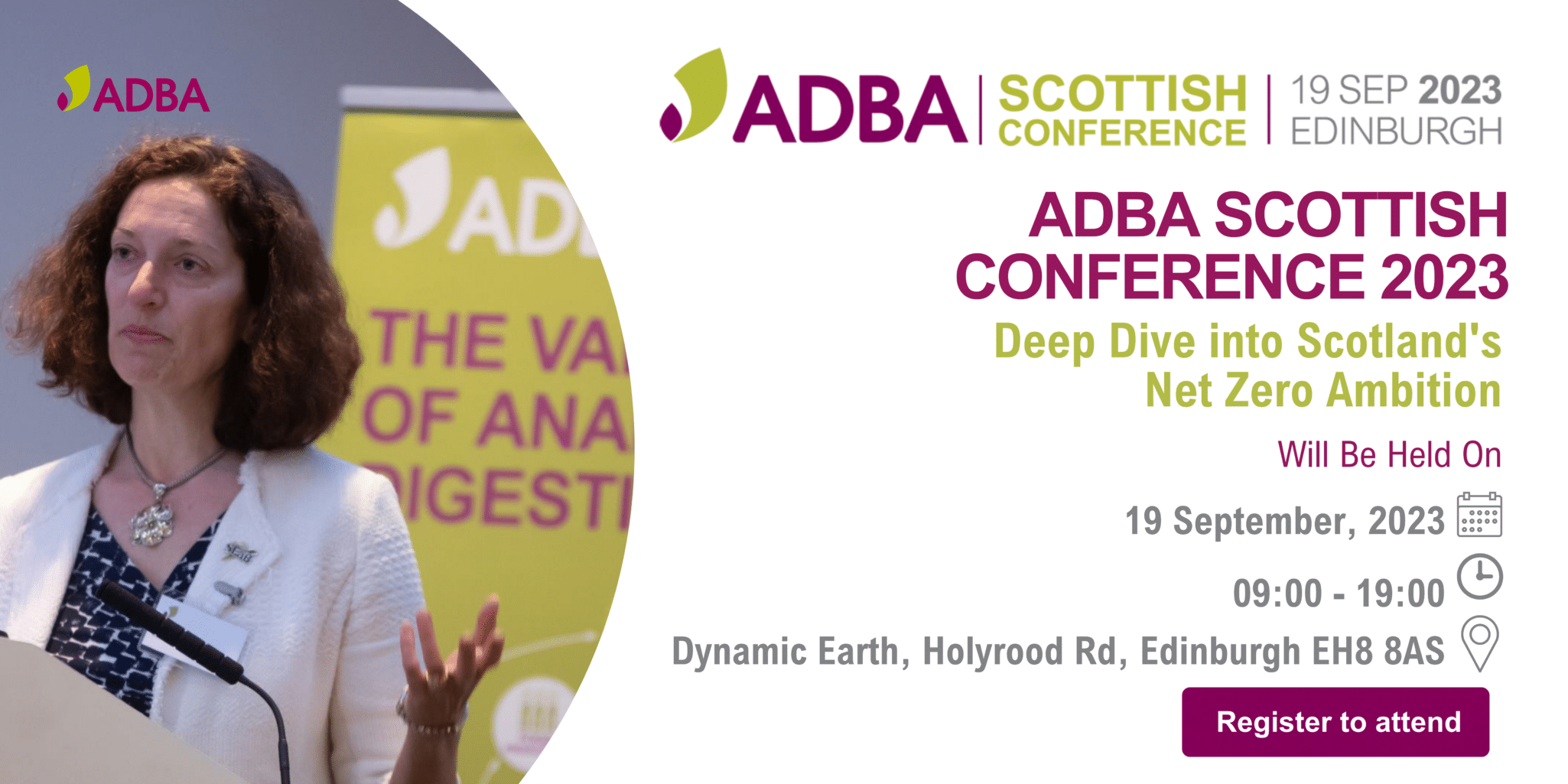MEMBER PRESS RELEASE - Vogelsang to present the HiCone for the wastewater sector at IFAT…
MEMBER’S PRESS RELEASE: How to select a CHP unit for your AD project
James Thompson, Head of Operations for JFS & Associates, outlines the main considerations for AD plant developers when choosing Combined Heat and Power units. With its partners, JFS & Associates currently has 10 CHP units in operation ranging from 125kW to 500kW in electrical output.
A Combined Heat and Power (CHP) unit is one of the biggest investments in a single component that will be made on any Anaerobic Digestion facility. On the majority of AD developments in the UK, the CHP will be the ‘beating heart’ of the plant and will ultimately determine both performance and profitability. It is therefore critical to get it right when making your choice.
CHP units are an efficient way to produce both electricity and heat. They comprise of an engine, designed to run on biogas, which is linked to a generator that produces electricity. Heat is produced from the combustion of biogas in the engine and a heat exchanger captures heat from the engine’s cooling water. Heat can also be recovered from exhaust gases, thereby maximising the thermal power available to heat digesters, use for pre- or post-treatments such as pasteurisation or for use offsite on heating and drying schemes.
In the current AD climate, selection of a CHP unit is often determined by availability and delivery times in order to avoid looming FiT degressions. Alternatively, a CHP unit is specified by preferred technology providers, particularly if you are building your facility under an Engineering, Procurement, Construction (EPC) contract. This route often means that a CHP unit is selected which offers a low capital cost, but we might not be getting the best deal in the long run. Lifecycle costing is much more important.
So what should we be considering when we procure a CHP unit?
Firstly, size is important! Sized correctly, your CHP will maximise the electrical output from the biogas yield produced by your AD plant. A proportion of this electrical output will be used to power the AD plant (the parasitic load) and the remainder will normally be exported to the national grid. If your CHP unit is too small it will be underutilised as it will not generate the power that your biogas has the potential to give you. Even worse is being over optimistic on biogas yield and oversizing your CHP unit. In this scenario, not only will the unit cost more, but it will run less efficiently and the hours of operation can be dramatically cut due to there not being enough gas to run it. When this happens, power has to be imported to run the plant. Also, persistent shutdowns and restarts can damage your plant and lead to higher maintenance costs.
Once you have sized your CHP unit, consideration needs to be given to whether you purchase a single unit or a twin pack. For example, it may be cost beneficial to purchase a single 1MW CHP unit or two 500kW CHP units. The advantage of a twin pack solution is having the flexibility to keep one unit operational to maintain heat and power to the plant whilst the other unit is offline for servicing or due to a fault. Capital cost and servicing costs for two units will be more, but over 20 years the additional costs should easily be recovered by less down time.
Two of the biggest factors affecting lifecycle costings are reliability and efficiency. CHP unit suppliers will monitor operational data remotely for the units they have sold and should therefore have reliability and efficiency data to hand for each model they sell. Poor reliability means lost revenue and higher maintenance costs. Poor efficiency also means additional costs. For example, a 1MW CHP unit running at 42% efficiency at 50% CH4 will require around 40,000m3 less biogas per annum to achieve the same electrical output as another unit running at 40% efficiency. This represents a significant saving in feedstock costs.
Maintenance and service contracts will be the biggest operating cost once you have procured your CHP unit. The AD sector is dominated by containerised CHP units, built and tested offsite. These ‘plug and play’ options are attractive as they provide developers with a standard package with a small footprint which we know will work once installed and commissioned. It is commonplace for plant operators to continue this relationship with their CHP supplier by taking out a service and maintenance contract with them. The usp for suppliers is the ‘dongle’ they use to plug into their CHP unit either onsite, or remotely, to run diagnostic tests and software upgrades. This ensures that performance of your unit is fully optimized to ensure the best possible return on your investment.
Service contracts with suppliers are expensive. Of course operators are at liberty to service and maintain their CHP units themselves or use third party service providers. However, cost savings by going down this route, along with the possibility of invalidating your warranty, has to be weighed up against the back-up and support offered by the original supplier. When choosing a service contract you need to consider factors such as do they offer 24hr call out, telephone and internet support? What is the availability of critical spares? What are the service intervals? How many maintenance engineers are available? Where are they based in relation to your plant? And what are their response times? The longer it takes for an engineer to become available and to get to site, the longer the CHP unit is offline which again equates to lost revenue.
Another major component of your operating expenditure is the cost of consumables. In order not to invalidate your warranty your supplier will specify biogas quality standards which have to be met to fuel the unit. One of the most important and variable quality requirements is the hydrogen sulphide concentration on which the CHP engine should be run. This can typically range between 100ppm and 500ppm. If H2S cannot be controlled through the AD plant, pre-treatment of biogas through the use of an activated carbon filter will be required to reduce the H2S content of the gas. The lower the target concentration of H2S, the more adsorption is required by the carbon filter and the quicker it needs to be replaced. On the flip side, an engine that is able to run at higher concentrations of H2S may lead to acidification of the engine oil by sulphur compounds which will result in more frequent oil changes to prevent corrosive damage. Other consumables include spark plugs, oil and filters. I would always recommend using quality replacements which meet the manufacturers recommendations. It just isn’t worth suffering downtime as a result of using inferior products.
One other issue that you could experience shortly after purchasing your CHP is the obsolescence. On one of our CHP units we were required to replace a part shortly after the warranty period had expired. To our surprise, the part had become obsolete and a replacement part required a costly modification in order to fit it. This is hard to protect against, but is certainly worth discussing with your preferred supplier.
Finally, and probably the most important bit of advice I can offer is to treat your CHP unit like a Formula 1 racing car. Be attentive to its needs and try to fuel it using good quality biogas. Before the CHP unit is handed over to you make sure it has passed any performance specifications that have been set and ensure that all operators have been fully trained in how to operate the CHP and carry out routine maintenance tasks. Daily inspections and tests should always be undertaken and logged, and performance data and trends should be reviewed for signs of reduced performance.
Rather than waiting to undertake routine maintenance activities such as oil changes at regular intervals a strategy of condition based maintenance should be implemented. Prevention is always better than cure and by monitoring the actual condition of the plant, maintenance can be undertaken when it needs to be done, not just when it is planned. It is imperative to get to know your plant and use your senses to detect irregularities such as hearing strange noises when the engine is running; picking up unusual smells such as burning oil; seeing leaks or smoke; or feeling the unit vibrating differently.
Considering a typical CHP engine might run for the equivalent of 400,000 miles per year, selecting the right CHP unit and then investing time and money to look after it will undoubtedly save you time and money in the long run, and will maximise financial rewards for your efforts.
An edited version of this article appears in the ‘Technology Focus – CHP’ (p15) in the Februrary 2016 issue of AD & Bioresources News.



